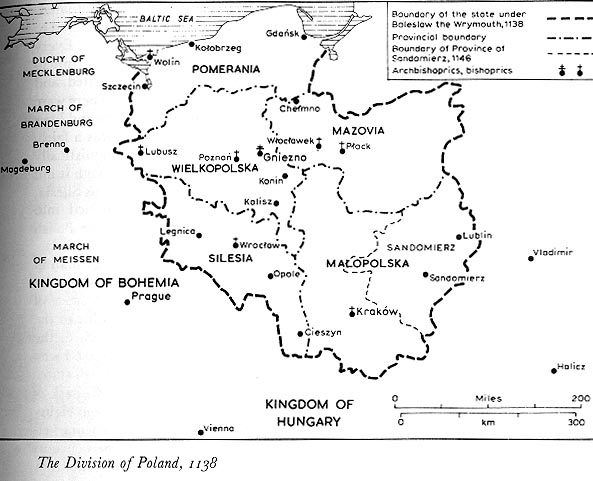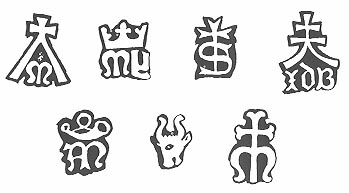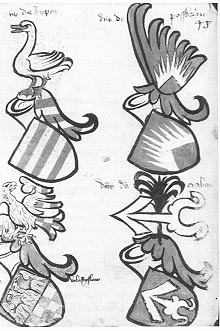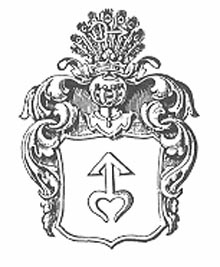

In Eldon C. Smith's New Dictionary of American Family Names. New York: Gramercy Publishing Company 1988, under Sypniewski it states: one who came from Sypniewo (Sypien's settlement). There are two estates called Sypniewo. One was south of Samotchin in Kreis Flatow, and the larger holding called Sypniewo was located north of Samotschin over the border in Kreis Flatow, West Prussia. This area is now part of Wielopolska, Poland.
Wielpolska or Greater Poland, was the home of the Polanie, an ancient Slavic tribe that lived in the heart of Poland. Great Poland contains the oldest towns in Poland. Gniezno was an ancient castle town built in the eighth century. It was the first Polish capital. Poznan, the first diocese (968) and the next capital, was founded before 900 A.D. Poland's first two Christian kings were buried in Poznan's cathedral. Boleslav the Brave, the first ruler of Poland was crowned in 1000 A.D., and Poznan was his seat. This region has been under German influence as early as 1253.
There was a Ludwig von Sypniewski, age 17, in 1790, living in Grubon, Kreis Kuln in West Prussia. I found two Sypniewski coats of arms (see below).
Many Sypniewskis are found in the Parish of Margonin, Posen, Prussia.

In fact, my own grandfather was from Kowalewo in Pomorskie Province. My grandfather went to the Catholic Church in the parish of Margonin, in the Archdiocese of Poznan. One Sypniewo (Kreis Kolmar) was located on the west bank of Margoniner See (lake) and south of Margenisdorf Forst, Margonin, Posen, Prussia. This estate was in the possession of the Laasch family in 1645. Around 1793, the family von Skorzewski owned the village (Antlitz und Geschichte des Kreise Kolmar - Posen - 1970). The surname Sypniewski has also been found in the region of Polesie, the largest province of Poland.
Polesie was inhabited by Ruthenians, called Polesians. They were of Ukrainian descent. The surname came from East Prussia in 1490. They were of the royal clan of Odrowaz. They settled in Krakow first. The Sypniewski name was elevated to the ranks of nobility, which made the family very influencial.
Sypniewski has been spelled Sipniewski, Sypniewsky, Sypniowski, and Sypniowsky.
During the 16th and 17th century, Sypniewski was found in Polesia, where they emerged as a notable family. From the 16th century onwards, Poland has their Listracje (inventories) (much like England's Domesday Book(Davies 56). The 17th, 18th, and 19th century's turbulance forced many Polish families to emigrate to a more peaceful area of Europe.
 Left from Polskie Rody Szlacheckie I Ich Herby Artist: Taduesz Gajl |  |
Runge-Sypniewski:
While researching the Sypniewski name, I have discovered that the Sypniewskis originally were from an old Silesian family of Rünge. Apparently this family later branched out to Pomorze and Prussia.
This most likely was because of the political climate in Germany. The Sypniewski arms were recorded since 1480, when the Sypniewskis moved to Silesia around Podgorze and received the right to use the Odrowaz clan's coat of arms. The king, Kazimierz Jagiellonczyk (1427-1492)was said to have granted the Runge family the right to use the Odrowaz arms. King Kasimierz was Grand Duke of Lithuania from 1440, and King of Poland from 1447; his wife was Elizabeth of Habsburg, "the mother of kings." Kazimierz's greatest achievement was victory in the Thirteen Years War (1454-66) over the Teutonic Knights. (Polska Encycklopedia Szlachecka and An Illustrated History of Poland).
The Odrowaz-Sypniewski Coat of Arms:
Another account of this family, written by Theodora Zychlinski called Zlota Kseiga Szlachty Polskiej (Golden Book of Polish Nobility)states that:
The Sypniewski - Odrowaz arms are said to have come from Podgorza region, as recorded in 1490. Their nobility confirmations : 1483 & 1833. Jan resettled in Lithuania in the province of Brzesko-Litewesk, Poznan, Nowy Sacz, and Prussia. Around the 16th century, the Sypniewski family is found living in Greater Poland and owned estates there. They branched off from here. We then find them in western Prussia on the estate of Zmijewie(Kojalowicz, Niesiecki, Goluchowski).

The Runge Sypniewski Family
In German accounts by Dr. F. W. Schmidt's Der Kreis Flatow, it states:
The Runge-Sypniewski family, of unknown origin, owned estates in the 14th and 15th century called Dziewierzno, Justrogosc, and Sypniewno (in the district of Zl~oczowski). These estates, according to Schmidt passed on to the Goetzendorf-Grabowski family. To this day, they use the surname Runge, which means they were most likely ancestors of the ancient Silesian family of Runge, located in Brandenburg, in the Pomorze region in Prussia. The family Runge has its own coat of arms. The Sypniewski branch moved from Silesia to Podgorze and received recogition of their arms by the King of Poland. It was at this time that they exchanged their arms for that of the Odrowaz clan.
Italian Armor Symbols:

Each armourer struck his mark on the pieces he had worked on as a token of guarantee. Since several specialists often cooperated on one suit, it is not unusual to find more than one mark on a suit of armor. Some masters, became very well known; the Missaglias and Negroli were two such Italian families. Kings and princes from all over Europe tried to persuade Milan masters to come to their courts to work. Their marks often became their coats of arms as well.
I present these symbols only as an example of the similarities between these marks and many coats of arms. Note the bottom right hand corner, which resembles the Polish arms of Lada.
German Heraldry:


